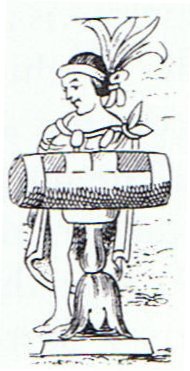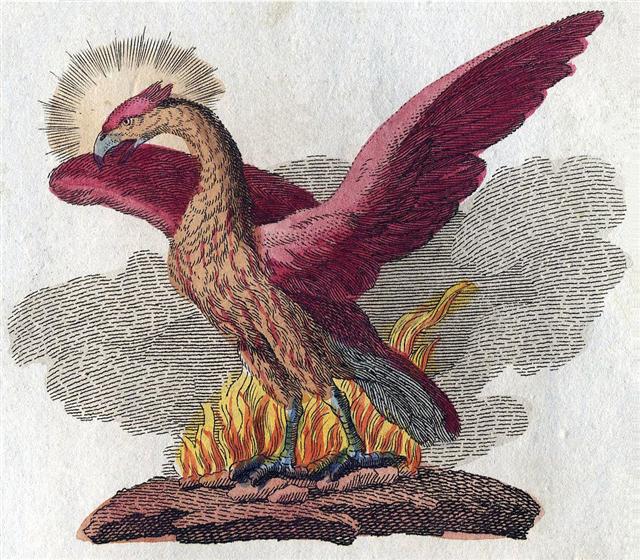We began this investigation of pu / puo in order to try to arrive at some sort of understanding of ihe haki tua pu:
... Their mothers have told them that the sky is a big bowl whose edge is fitted together with the horizon except at those places where the sun goes up and down. Through these two holes ships from another world can enter into our world ...
In the H text the creator has put one of his pu glyphs in Saturday where it probably was intended the reader should count, for instance 413 + 55:
Metoro might have understood the meaning of the great pu in day 457 (→ 45 weeks = 314 + 1 days, → 4 * 57 = 227 + 1), because he said this was a time for sounding the drums (rutu te pahu) and to count (hia):
... It was 4 August 1968, and it was the feast day of Saint Dominic, patron of Santo Domingo Pueblo, southwest of Santa Fe. At one end of the hot, dusty plaza, a Dominican priest watched nervously as several hundred dancers arranged in two long rows pounded the earth with their moccasined feet as a mighty, collective prayer for rain, accompanied by the powerful baritone singing of a chorus and the beat of drums. As my family and I viewed this, the largest and in some ways the most impressive Native American public ceremony, a tiny cloud over the Jémez Mountains to the northwest got larger and larger, eventually filling up the sky; at last the storm broke, and the sky was crisscrossed by lightning and the pueblo resounded with peals of rolling thunder ... Anciently nothing was arbitrary - therefore we should look at August 4 (216 = 4 * 54 = 3 * 72 = 2 * 108). Could this day have some veiled meaning, e.g. to point at St John's Day / Christmas Evening? ... multiple-allusions may be expressed by the concept of kaona [taoga], a Hawaiian word that means 'veiled meaning or symbolism', which is a well-known feature of poetry, music, and dance ...
August 4 corresponded to "June 24 (St John's Day), i.e. 216 - 41 = 175 (= 350 / 2).
According to my reconstructions te pahu in the C text should be in April 22 (*32), i.e. 6 days after Polaris (*26):
In August 4 was day 216 counted from January 1 and 3 * 72 = 216 could suggest that 366 = 360 + 6 forced a corresponding 210 + 6. The Eve of the Pleiades was named the 6 stones (Tau-ono). ... The Mahabharata insists on six as the number of the Pleiades as well as of the mothers of Skanda and gives a very broad and wild description of the birth and the installation of Kartikeya 'by the assembled gods ... as their generalissimo', which is shattering, somehow, driving home how little one understands as yet. The least which can be said, assuredly: Mars was 'installed' during a more or less close conjunction of all planets; in Mbh. 9.45 (p. 133) it is stressed that the powerful gods assembled 'all poured water upon Skanda, even as the gods had poured water on the head of Varuna, the lord of waters, for investing him with dominion'. And this 'investiture' took place at the beginning of the Krita Yuga, the Golden Age ... Anciently the Polynesians had counted with 10 months, ... From the natives of South Island [of New Zealand] White [John] heard a quaint myth which concerns the calendar and its bearing on the sweet potato crop. Whare-patari, who is credited with introducing the year of twelve months into New Zealand, had a staff with twelve notches on it. He went on a visit to some people called Rua-roa (Long pit) who were famous round about for their extensive knowledge. They inquired of Whare how many months the year had according to his reckoning. He showed them the staff with its twelve notches, one for each month. They replied: 'We are in error since we have but ten months. Are we wrong in lifting our crop of kumara (sweet potato) in the eighth month?' Whare-patari answered: 'You are wrong. Leave them until the tenth month ... and when the Full Moon was in October 22 (295 = 10 * 29½) it meant the Sun had to be in April 22 (295 - 183 = 112). This was 112 - 80 = *32 right ascension days after 0h. In the following day the Sun would rise together with the blinking Mira - which might induce Father Sky to move (to come alive) - an idea resembling that of Mimosa (β Crucis) which was rising with the Sun *192.9 - *33.7 = ca 159 right ascension days later. Or *365.25 + *33.7 - *192.9 = ca 206 right ascension days earlier. 206 + 159 = 365.
... Christmas Eve is followed by Christmas Day, Midsummer Eve by Midsummer Day, etc. There should be a pair of glyphs to illustrate this phenomenon ... August 4 (216) was followed by 9h (*137), at which time the Full Moon could be observed at the right ascension line reaching to the South Pole star (Dramasa, *320 = *137 + *183 = *32 * 10). Modern scientific minds make us count from the instant when the lightning reaches our eyes to the moment when the sound reaches our ears. Anciently they knew better - before any lightning could be observed the distant rumbling (like drums) would reach our ears. August 5 (217) + 107 = 324 (November 20): ... On the following day, 20 November 1770, Commander José Bustillo took formal possession of Easter Island 'in the name of the King and of Spain, our Lord and Master Don Carlos the third', renaming the island 'San Carlos'. Several hundred Rapanui - probably members of the Koro 'o 'Orongo tribe of the eastern 'Otu 'Iti - observed the ceremony not far from Poike's parasitic cones Parehe, Teatea, and Vai 'a Heva, on the tops of which the Spaniards had planted three crosses. Following three boisterous 'Viva el Rey!' for each cross, the land party let off three salvos of musketry, whereupon the two Spanish vessels San Lorenzo and Santa Rosalia responded with 21 cannon salutes. Spain's foremost historian of the Pacific, Francisco Mellén Blanco, has written of the event: 'The spectacle must have been awe-inspiring for the islanders. The parade of uniformed soldiers; the fluttering flags; the chaplains in their surplices chanting out the litany; the beating of drums, and the trilling of fifes must have left a lasting impression on all the natives who witnessed the procession' ... Right ascension day 324 (= 136 + 188) corresponded to FEBRUARY 8 (39) = at the End of the River = at the tail of the Toucan bird with a very long 'nose', ... The dream soul went on and came to Tama. She named the place 'Tama, an evil fish (he ika kino) with a very long nose (he ihu roroa).' [E:8]
which was 188 (→ 18 * 8 = 144 = 360 - 216) days after AUGUST 4 (216 = 404 - 188) → kaona. ... On February 9 the Chorti Ah K'in, 'diviners', begin the agricultural year. Both the 260-day cycle and the solar year are used in setting dates for religious and agricultural ceremonies, especially when those rituals fall at the same time in both calendars. The ceremony begins when the diviners go to a sacred spring where they choose five stones with the proper shape and color. These stones will mark the five positions of the sacred cosmogram created by the ritual. When the stones are brought back to the ceremonial house, two diviners start the ritual by placing the stones on a table in a careful pattern that reproduces the schematic of the universe. At the same time, helpers under the table replace last year's diagram with the new one. They believe that by placing the cosmic diagram under the base of God at the center of the world they demonstrate that God dominates the universe. The priests place the stones in a very particular order. First the stone that corresponds to the sun in the eastern, sunrise position of summer solstice is set down; then the stone corresponding to the western, sunset position of the same solstice. This is followed by stones representing the western, sunset position of the winter solstice, then its eastern, sunrise position. Together these four stones form a square. They sit at the four corners of the square just as we saw in the Creation story from the Classic period and in the Popol Vuh. Finally, the center stone is placed to form the ancient five-point sign modern researchers called the quincunx ...
|
||||||||||||||||||||||||||||||||||||||||||||||||||||||||||||||||||||||||||||||||||||||||||||||||||||||||||||||||||||||||||||||||||||||||||||||||||||||||||||||||||||||||||||||||||||||||||||||||||||||||||||||||||||||||||||||||||||||||||||||||||||||||||||||||||||||||||


























